Gwangyang Maehwa Village (광양 매화마을)
0m 34321 2023-10-26
1563-1 Seomjingangmaehwa-ro, Gwangyang-si, Jeollanam-do
+82-61-772-9494
Following the Seomjingang River flowing down the outskirts of Jirisan Mountain is a village filled with plum trees. This village, Seomjin Village, is also known as the Maehwa (plum) Village for its abundant number of plum trees. Instead of crops and grains, plum trees are cultivated on farmlands, boasting white snow-like blossoms in March and bearing ripe plums in June. The annual Plum Blossom Festival takes place in the village every March when the plum blossoms are in full bloom.
Gwangyang Maehwa Festival (광양 매화축제)
519.6394604673361m 57826 2024-02-26
55 Jimak 1-gil, Gwangyang-si, Jeollanam-do
+82-61-797-2721
Gwangyang Maehwa Festival takes place next to the Seomjingang River in Gwangyang Maehwa Village, home of the largest number of plum blossom trees in Korea. During the festival period, visitors can enjoy a walk beneath the plum blossoms, and also sample and purchase local organic plum products.
Cheong Maesil Farm (홍쌍리 청매실농원)
551.697586198239m 71041 2024-02-01
55 Jimak 1-gil, Daap-myeon, Gwangyang-si, Jeollanam-do
Cheong Maesil Farm sprawls across an expansive area of over 165,000 m2 at the foothills of Baegunsan Mountain, which rises to an elevation of 1,217 meters. The farm has been lovingly tended to by the renowned Plum Blossom Doctor, Hong Ssang-ri, for decades, drawing visitors from all over the country. In March, Cheong Maesil Farm transforms into a breathtaking canvas of colors—with blue and red plums, the delicate lily trees and the vibrant cornelian cherries all blossoming in unison. For photo enthusiasts, the farm boasts a dedicated photo zone, while the Pavilion Observatory offers panoramic views that are a favorite among visitors. From this spot, one can marvel at the picturesque scenery of Gwangyang Maehwa Village, Seomjingang River, and Hadong Village on the river’s other side. Visitors in spring are recommended to attend the annual plum festival centered around Cheong Maesil Farm. Moreover, the nearby Gwangyang Plum Culture Center makes for an enriching stopover.
Gwangyang Cheong Maesil Farm (광양 청매실농원)
556.5673399158353m 6230 2021-02-01
55, Jimak 1-gil, Gwangyang-si, Jeollanam-do
+82-61-772-4066
Located at the foot of Baegunsan Mountain with water of Seomjingang River flowing nearby, Gwangyang Cheong Maesil Farm offers the perfect setting for visitors to enjoy the scenery and locally produced maesil (plum). With various maesil related food products including side dishes as well as jam, jelly and traditional foods, visitors can buy freshly made products on-site or order online or by phone.
Myeongpum Hadong Green Tea [Tax Refund Shop] (명품하동녹차)
1.2 Km 0 2024-04-27
2571, Seomjingang-daero, Hadong-eup, Hadong-gun, Gyeongsangnam-do
-
Hadong Pine Forest (하동송림)
3.4 Km 30603 2021-07-21
2107-8, Seomjingang-daero, Hadong-gun, Gyeongsangnam-do
+82-55-880-2651
Hadong Pine Forest grows along the Seomjingang River near Seomjingang Iron Bridge. It was planted in 1745, during the 21st year of Joseon King Yeongjo’s reign, to block wind and sand. Now, it is one of the best pine groves in Korea.
In a total area of 26,000 ㎡ are approximately 750 old-growth pine trees. Along with the white sand on the riverside, the forest provides picturesque scenery when seen from Hasangjeong Pavilion within the forest. The forest park is used as a venue for folk games and major events hosted by the local government. There are sports facilities and recreational facilities teenagers, children, and families can enjoy, attracting many locals and tourists.
Baegunsan Eochigyegok Valley (백운산 어치계곡)
3.6 Km 21081 2021-06-01
531, Baekhak-ro, Gwangyang-si, Jeollanam-do
+82-61-797-3333
Eochigyegok Valley, located in Eochi-ri, Jinsang-myeon, is 7 kilometers long, and is a valley with clear water flowing through the lush forest with rocks in all sizes that provide a resting spot. In particular, it is home to Orodae Rock, cool enough to form dew even in the middle of the day and Gusipokpo Falls with a legend of a flying horse.
The valley is located ten minutes away from the Seomjingang River Maehwa Village, and plum trees cover the valley in spring with plum blossoms. In autumn, the countless oak trees in the forest become an acorn factory for its habitats. Baegunsan Eochigyegok Valley is worth visiting at any time of the year and provides various agricultural products to local residents. Orodae Rock, located in the uppermost stream, refers to a rock that looks like a large courtyard. An inscription remains, saying that it is named Orodae because it is cool enough to form dew even in the midday of the summer. Legend says that Gusiso Pool at the base of Gusipokpo Falls is so wide that it will not dry up even in a draught.
Pyeongsari Park (평사리공원)
6.5 Km 10485 2022-08-22
3145-1, Seomjingang-daero, Hadong-gun, Gyeongsangnam-do
+82-55-883-9004
Situated along Seomjingang River between Gurye and Hadong, Pyeongsari Park was built for the enjoyment of summer tourists to the area. In addition to the beautiful river, the park is home to campgrounds, numerous shaded rest spots, basketball courts, soccer fields, and an abundance of parking space. Decorated with Jangseung (totem poles, which used to be set at the entrance of villages), the spacious park is full of excellent amenities: barbecue grills, benches, drinking fountains, and clean bathrooms. The sandy banks of the river offer a unique opportunity to catch marsh clams.
Pyeongsari Park and its nearby attractions appeared in Toji (The Land), the epic historical novel by Park Kyung-ni. Visitors may want to tour the group of houses that have been reproduced to commemorate the novel, including the famous Choi Champan House.
Nearby attractions include Hwagae Market, Ssanggyesa Temple, and Seomjingang Maehwa Village, host of the Gwangyang Maehwa Festival.
[Hadong Pak Kyongni Toji-gil Trail 1] Seomjingang Pyeongsa-ri Park to Hwagae Market ([하동 박경리 토지길 1코스] 섬진강 평사리공원~화개장터)
6.8 Km 30159 2024-02-08
Agyang-myeon, Hadong-gun, Gyeongsangnam-do
Hadong Pak Kyongni Toji-gil Trail 1 offers a scenic route around the Pyeongsa-ri fields, famously depicted in the novel Toji (The Land) by prominent Korean novelist Pak Kyongni. Spanning 18 kilometers from Pyeongsa-ri to Hwagae Market, this trail allows visitors to stroll alongside the Seomjingang River, immersing themselves in the world of the novel. Additionally, it is celebrated as a magnificent spot for cherry blossom viewing in spring.
Pyeongsari Field (평사리들판)
7.9 Km 29471 2022-08-26
Pyeongsari-gil, Hadong-gun, Gyeongsangnam-do
+82-55-880-2651
Pyeongsari Field was created by Seomjingang River flowing through the canyon which attracted people to form a village. The field served as the central farming field and fed the villagers for many years and appeared as a setting in Park Kyongni's novel "Land." Pyeongsari field is one of the largest fields found along Seomjingang River, boasting a size of 2,743,801 ㎡.

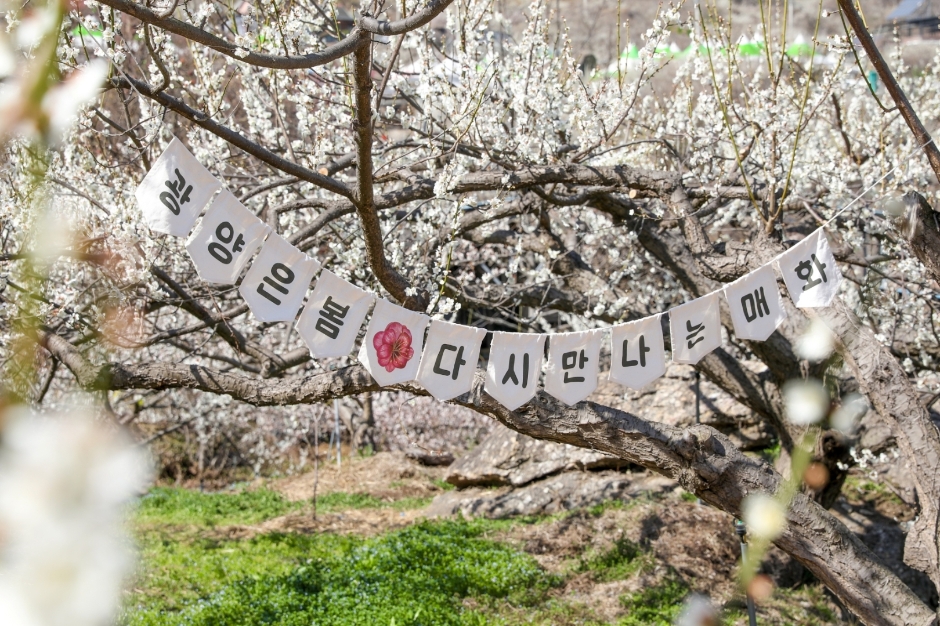
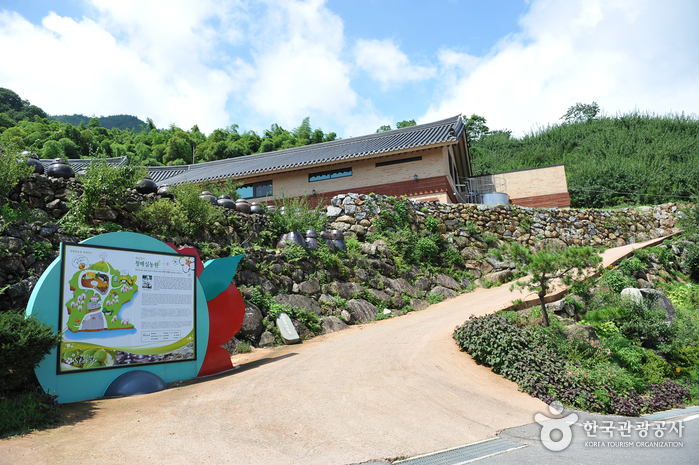
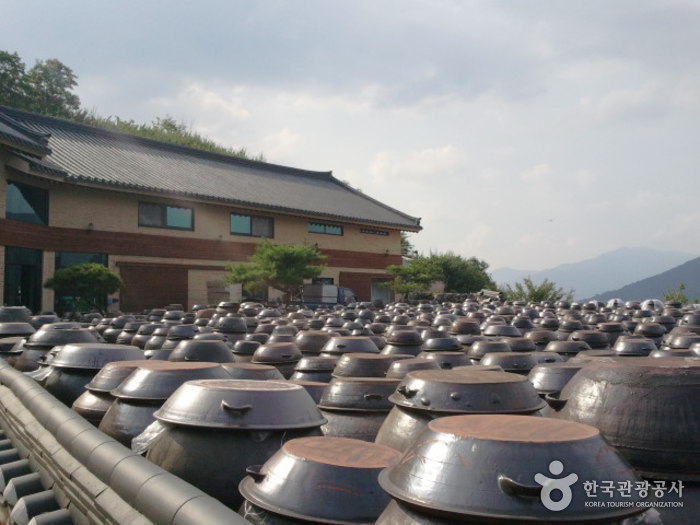
![Myeongpum Hadong Green Tea [Tax Refund Shop] (명품하동녹차)](http://tong.visitkorea.or.kr/cms/resource/93/2886293_image2_1.jpg)
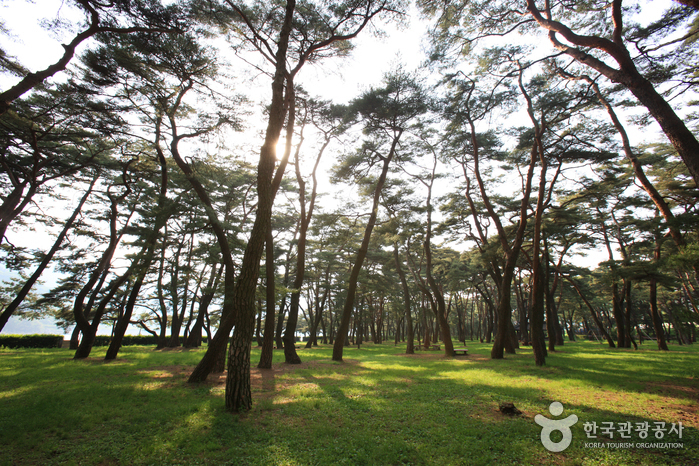
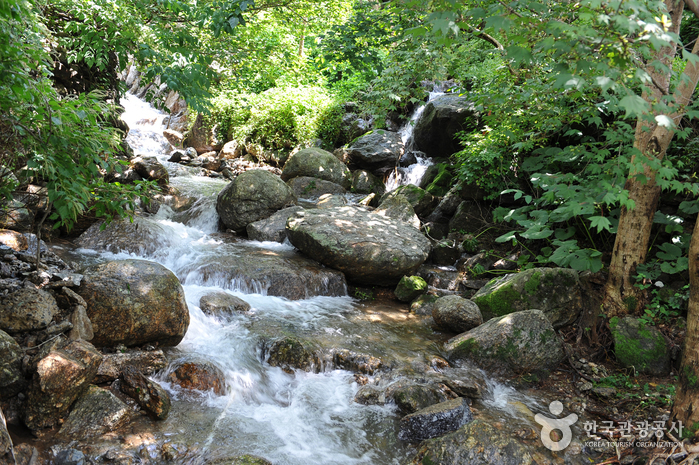
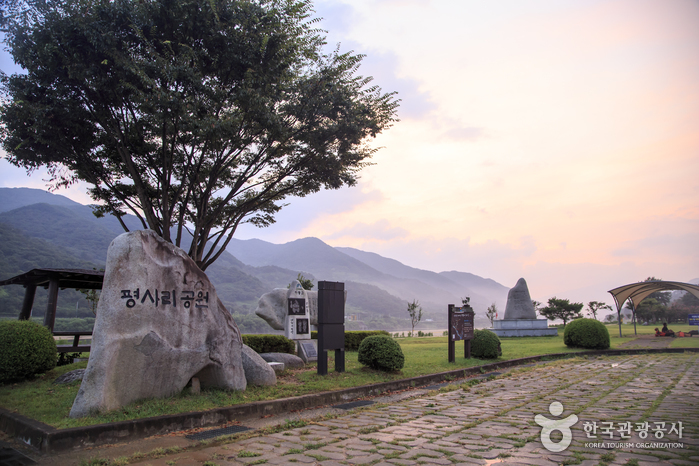
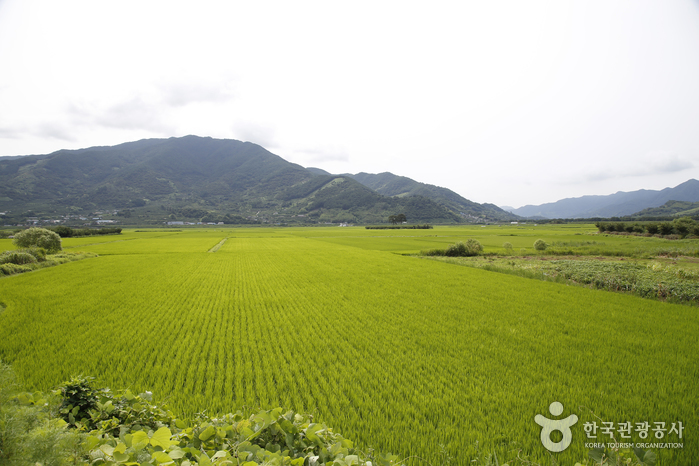
 English
English
 한국어
한국어 日本語
日本語 中文(简体)
中文(简体) Deutsch
Deutsch Français
Français Español
Español Русский
Русский